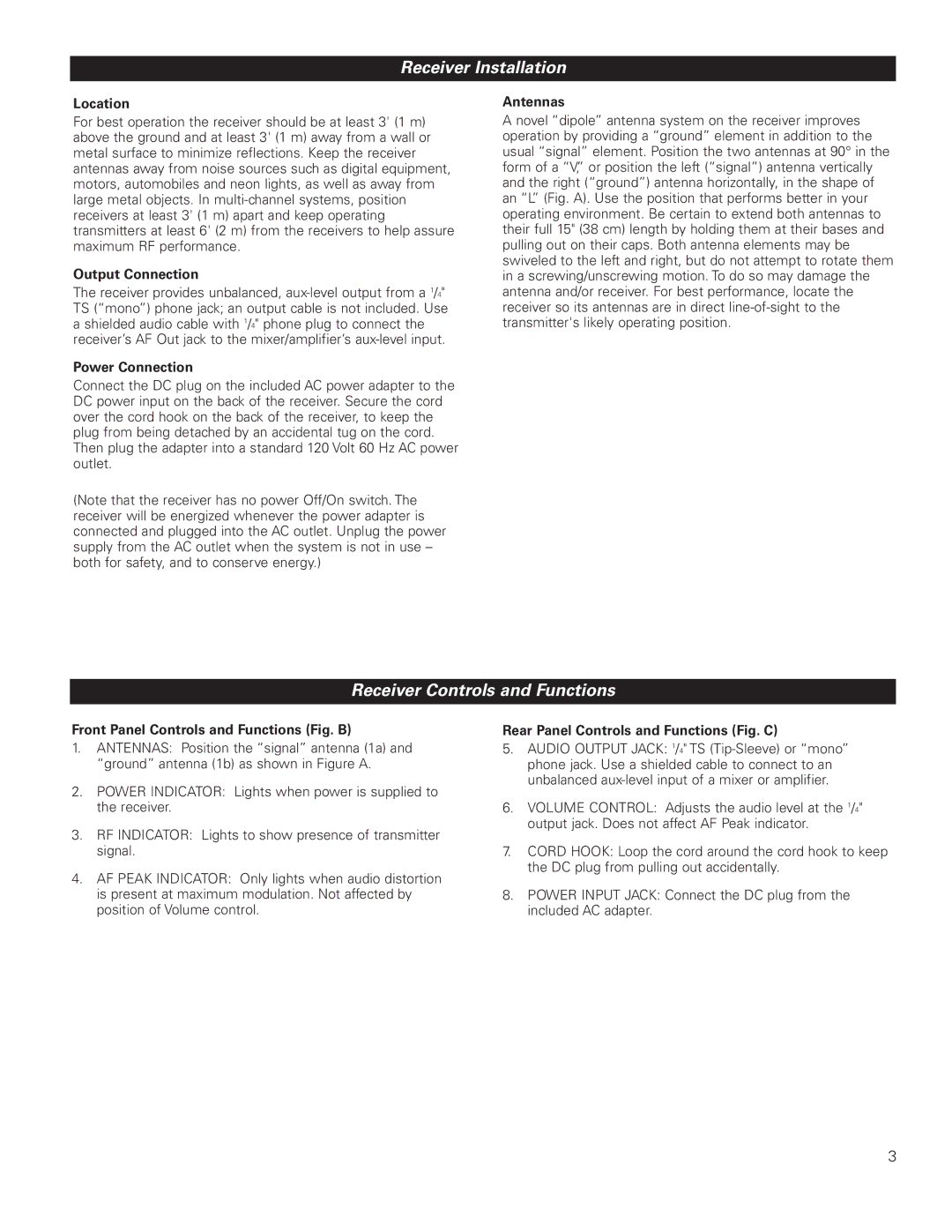
Receiver Installation
Location
For best operation the receiver should be at least 3' (1 m) above the ground and at least 3' (1 m) away from a wall or metal surface to minimize reflections. Keep the receiver antennas away from noise sources such as digital equipment, motors, automobiles and neon lights, as well as away from large metal objects. In
Output Connection
The receiver provides unbalanced,
Power Connection
Connect the DC plug on the included AC power adapter to the DC power input on the back of the receiver. Secure the cord over the cord hook on the back of the receiver, to keep the plug from being detached by an accidental tug on the cord. Then plug the adapter into a standard 120 Volt 60 Hz AC power outlet.
(Note that the receiver has no power Off/On switch. The receiver will be energized whenever the power adapter is connected and plugged into the AC outlet. Unplug the power supply from the AC outlet when the system is not in use – both for safety, and to conserve energy.)
Antennas
A novel “dipole” antenna system on the receiver improves operation by providing a “ground” element in addition to the usual “signal” element. Position the two antennas at 90° in the form of a “V,”or position the left (“signal”) antenna vertically and the right (“ground”) antenna horizontally, in the shape of an “L”(Fig. A). Use the position that performs better in your operating environment. Be certain to extend both antennas to their full 15" (38 cm) length by holding them at their bases and pulling out on their caps. Both antenna elements may be swiveled to the left and right, but do not attempt to rotate them in a screwing/unscrewing motion. To do so may damage the antenna and/or receiver. For best performance, locate the receiver so its antennas are in direct
Receiver Controls and Functions
Front Panel Controls and Functions (Fig. B)
1.ANTENNAS: Position the “signal” antenna (1a) and “ground” antenna (1b) as shown in Figure A.
2.POWER INDICATOR: Lights when power is supplied to the receiver.
3.RF INDICATOR: Lights to show presence of transmitter signal.
4.AF PEAK INDICATOR: Only lights when audio distortion is present at maximum modulation. Not affected by position of Volume control.
Rear Panel Controls and Functions (Fig. C)
5.AUDIO OUTPUT JACK: 1/4" TS
6.VOLUME CONTROL: Adjusts the audio level at the 1/4" output jack. Does not affect AF Peak indicator.
7.CORD HOOK: Loop the cord around the cord hook to keep the DC plug from pulling out accidentally.
8.POWER INPUT JACK: Connect the DC plug from the included AC adapter.
3
